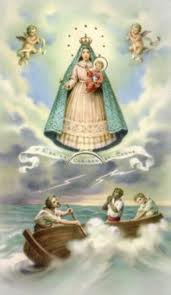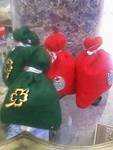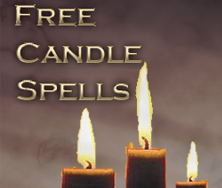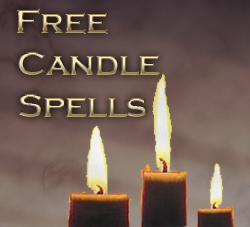
In the past year and a half, the calls for correction in what some call ‘cultural appropriation’ have been echoed through blog posts and social media to the point that I have decided that I too, must speak my peace. It is in the spirit of fairness to all cultures that I have a viewpoint that I think is being overlooked and not considered when we look at the bigger picture of all of us accepting each other and what we bring to the World, and not necessarily take from it, as some feel that their culture is being stripped away from the original adherents. The zeal and energy that extrudes from these very vocal, and sometimes very negative, individuals leads some to believe that their protestations are a cover for confessions that they as well, could be appropriating culture. Here is my encounters and musings on the subject of cultural appropriation.
Many years ago, I was invited by a college Professor to assist students in exposure to non-mainstream religious beliefs practices. The Professor knew that I participated in ATR (African Traditional Religious) ceremonies, and if the occasion presented itself, I was asked to bring a student with me to witness one of the minor rituals and/or gatherings that the culture presented to me. Other times, I would give a private interview to students to help them understand, or facilitate a consultation with another religious elder for their own experience. All of the students that accompanied me were not African nor descendants of Africa, but Arabic, East Indian, Latino, Asian, and Caucasian. One said outing took me to a company that specialized in products used by believers in a folkloric tradition called Hoodoo. After moving about the store, we met the owner, who had finished a conversation with a colleague, and joined us to give a good amount of her time in the traditions of Hoodoo and it’s connection with African belief systems. I too, became the student that day, as I had many misconceptions on what Hoodoo and Conjure was about. I was so intrigued that I thought it only right to become a student of the proprietor in order to fully give justice to the time she spent talking with me and the students I brought into her store.
Fast forward to today, with the ‘__________ girl magic’ movement (the line is to insert your color choice). These empowered individuals, along with others who are inserting politics into the mix, are some of the ‘front line’ spokespersons regarding cultural appropriation. One individual not named, also is a proprietor of said products that are used in Hoodoo and Conjure, speaks out against anyone who is not a person of color, who sells and makes a living selling these products. This group that is being targeting include the lady in the above mentioned paragraph, and myself, amongst others. It is ironic that when I was learning about Hoodoo and Conjure that in my homework packet, I was to interview and African American who had knowledge of Hoodoo. I approached many who I had a working relationship with me, and quite often was told, “‘Oh you don’t want to be messing with that mess! Mmm-mmm’ or ‘that was something before we went to Church.'”. Some Blacks were uneasy talking about a folkloric belief from their own past or their culture’s past, and would even go so far as to feign innocence or a lack of knowledge regarding why a man might not want to drink, coffee, cola, or eat spaghetti from a female he hardly knew. I’ll let you think about that one.
When I was newly introduced to the community of the ATR I practiced, the whispers in Spanish were audible, “‘But she’s WHITE!?!'” My Puerto Rican godmother would shrug her shoulders and say, “‘The Orishas pick who they want to pick'” and once it was evident that I was knowledgeable in some of the customs and songs, only then did those who vocalized their concern relax enough around me to get to know me. Earlier this year, I was speaking with another Caucasian regarding the Orishas and their context that was used in a certain young adult novel that was being read amongst the students, and this individual said that they were knowledgeable about Lukumi. I asked them if they had ever gone to a guiro and they said that why would be fearful of cultural appropriation. Really? How? By going to a songfest for Ochun/Oshun/Oxum (the name of the Goddess in African/Spanish/Brazilian)?
Yet, those same proprietors of Hoodoo and Conjure products do not understand that this folkloric belief system was guilty of cultural appropriation way back when. The seeds of certain plants that were transported in the folds of skin and hair of the Diasporic travelers were not the majority of the botanicals that was needed to ward off detection when getting on the ‘Train Northbound” or to build strength and courage under excruciating slavery. The Africans who were brought over needed the herbal and plant knowledge of the land called America and who better to know the uses, both medicinally and spiritually, of plants grown in the early United States than the Native Americans already here for generations. It is the interaction of African slaves, along with some European influences, and the Native American herbal lore, that form the base of the Holy Trinity of Hoodoo and Conjure.
So now, who’s zooming who?
When you see me, this descendant of the Alabama Coushatta tribe as well as European bloodlines, my elekes peeking out from my shirt collar, long blonde hair (dyed to cover the gray) giving the appearance of some sort of Slavic/Nordic ancestry (not!), make sure you see me for who I am, not an accused thief of culture from someone who don’t know my history. You never know how long I have been practicing or what knowledge I bring to the table until you become friends with me.
Thanks Aretha, now I’ll have that song in my mind all day.
* * * * *

The All Saints Candle Chapel is being constructed for those who want their candles burned for aid and assistance in the matters of love, luck, success, court cases, and more. Read more about the chapel here:








